Choosing the Right Reed & Finding the Perfect Sett
One of the most common questions we encounter in weaving is determining the correct sett and reed to use. The answer, we often say, is that it depends. This topic came up recently during the Winterful Weave-Along, which featured the Kaleidoscope Scarf, a log cabin, colour-and-weave scarf woven in plain weave. While designed for a rigid heddle loom, it can easily be adapted to multi-shaft looms. Amanda Wood, the pattern designer, set the pattern at 12.5 ends per inch (epi) because she used an Ashford rigid heddle loom with a 12.5-dent reed. Naturally, many in the SweetGeorgia Discord community asked if it could be woven with a 12-, 10-, or even 20-dent reed.
Felicia’s response to questions like these is that the answer depends and encourages everyone to sample. She has explored weaving with the same warp yarn, a fingering-weight knitting yarn, often with SweetGeorgia Tough Love Sock or similar lightweight yarns like SweetGeorgia BFL+Silk Fine, at various setts ranging from 10 to 20 epi. Each sett produces different fabric characteristics. For her, each woven piece effectively becomes a sample for future weaving.
Woven Scarves with Different Reeds/Setts
Here, she has shared some of her past scarves, which she also uses as samples, all woven at different setts to give us an idea of what we may expect when weaving something similar.
Colour Gamp Shawl
To start, Felicia highlights the Colour Gamp from the School of SweetGeorgia course Handwoven Colour as an excellent way to learn about optical colour mixing in plain weave. At 10 epi, the fabric had a fantastic drape, soft and luscious, but felt the tiniest bit sleazy, meaning the structure wasn’t ideal for strength. She tests this by seeing if a finger can poke through the fabric, a result of also using a superwash yarn which doesn’t felt or bind together. After weaving at 10 epi, she adjusted to 12 epi for future projects using SweetGeorgia Tough Love Sock.
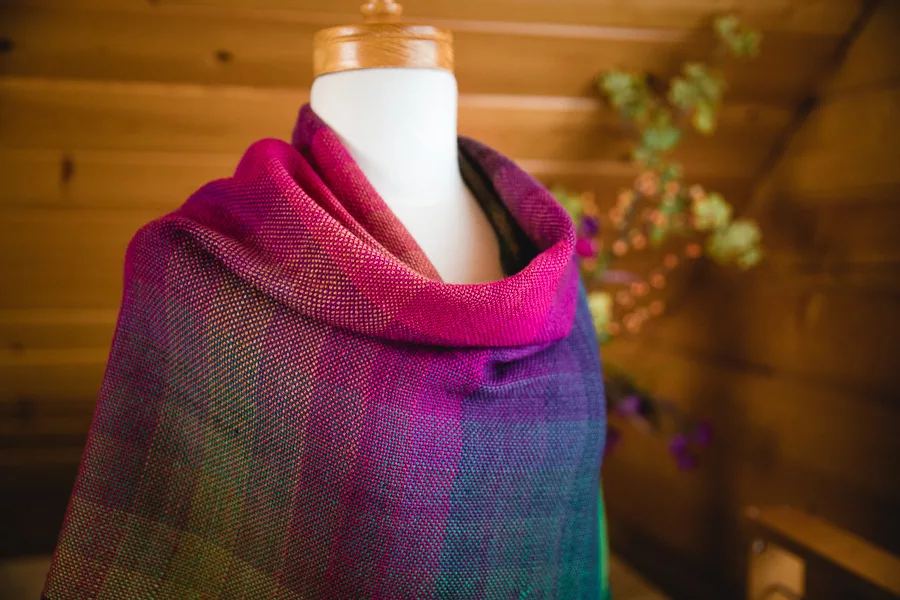
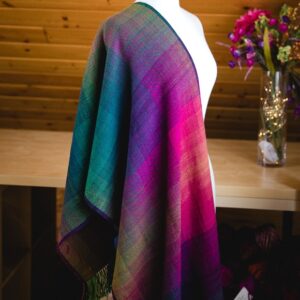
Gradient Sock Scarves
Using the SweetGeorgia Sock Blanks, another finger-weight yarn, Felicia wove multiple scarves sett at 12 epi. The resulting fabric was structurally sound, though slightly crisper than desired. Ideally, she would have preferred 11 epi for a balance of softness and structure. She also experimented with different wefts. For example, substituting the weft for the SweetGeorgia Merino Silk Lace weft instead of the fingering-weight yarn created a drapier and slinkier fabric.
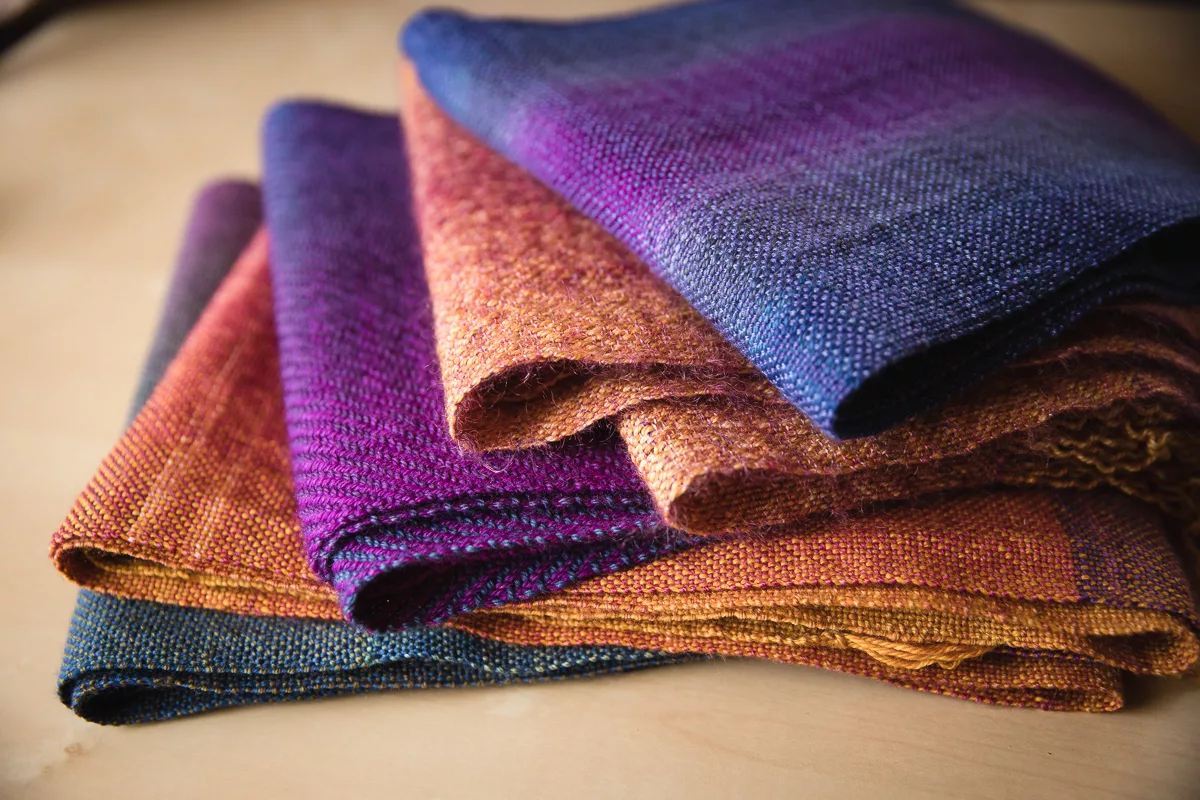
Handspun Scarves
Felicia also explored using her handspun yarn as warp, sett at 12 epi. While she initially believed the yarn was fingering weight, it turned out to be slightly thinner. Paired with SweetGeorgia Merino Silk Lace as weft, the result was an exceptionally drapey fabric but one that felt less structurally sound. She noted that increasing the sett would have provided more structure and strength to the fabric.
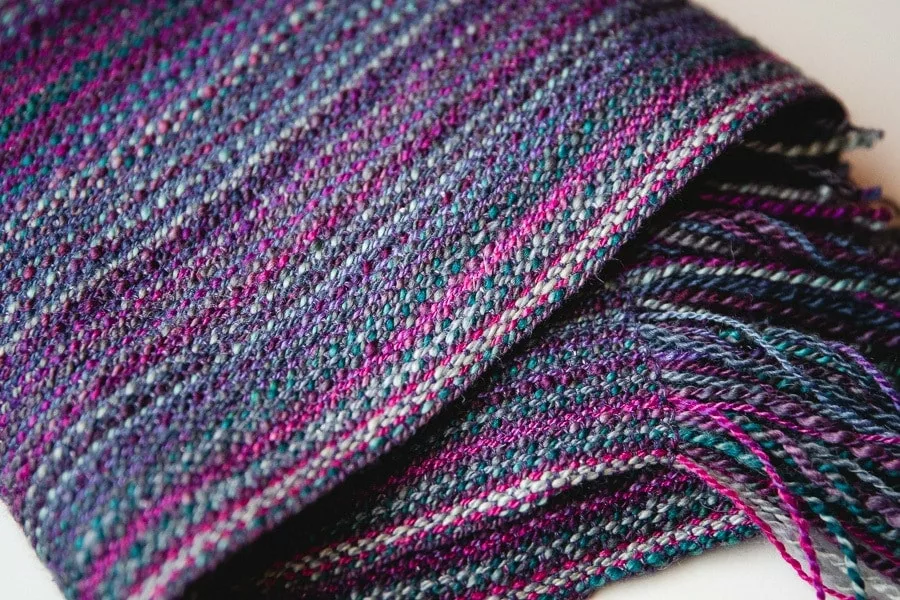
Lizzy Line Scarf
Charlotte Lee, a member of the SweetGeorgia team, wove the Lizzy Line Scarf using the SweetGeorgia Mohair Silk Sock yarn in the Lizzie Line colourway from the SweetGeorgia Secret Stash Club as warp. For this finer fingering-weight yarn, she used a 15-dent reed, a new option from Schacht. Paired with the new SweetGeorgia 20/2 Mulberry Silk yarn as weft, the result was a buttery, soft and drapey fabric with a slightly warp-faced appearance.
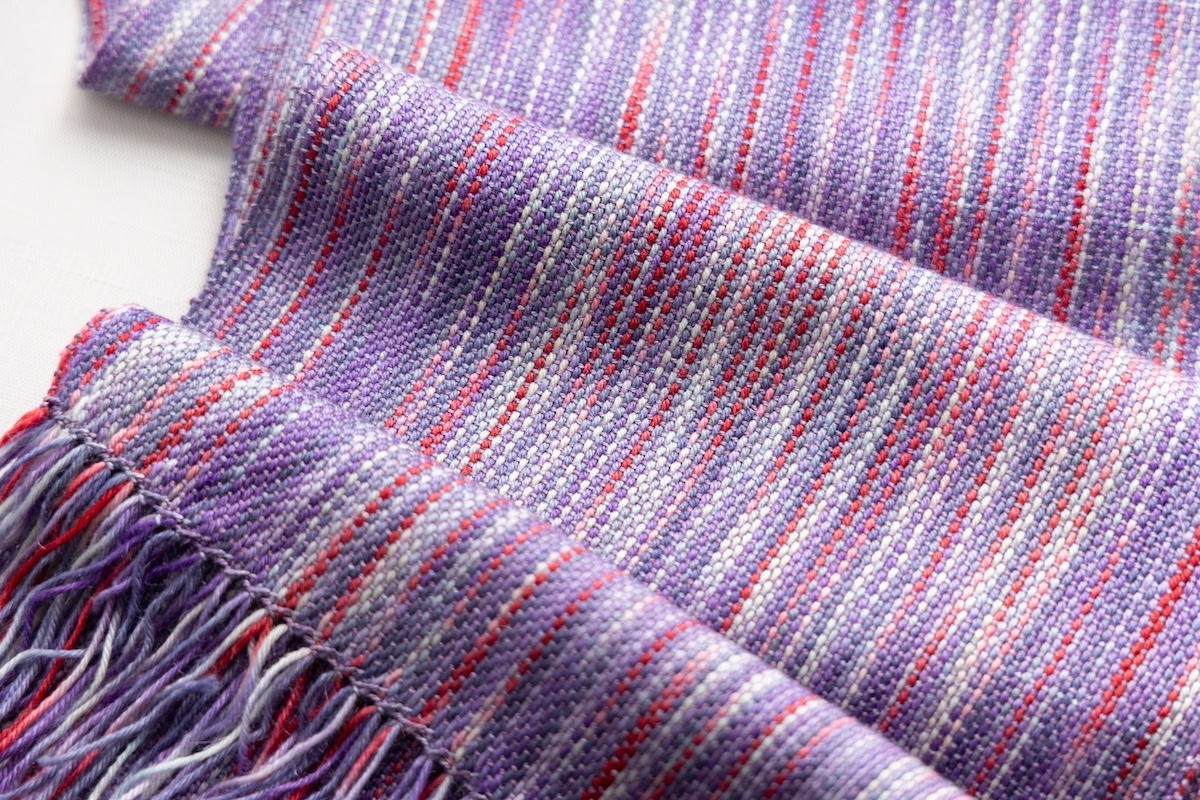
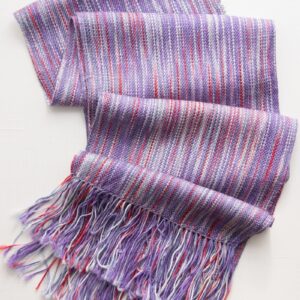
Faux Ikat Scarves
In a project Felicia calls “Faux Ikat,” the emphasis was on showcasing the warp colours of a hand-painted skein with intentional pooling, with the end result also having a more warp dominate overall look. To achieve this, the scarves were sett at 20 epi with a fingering weight yarn that is highly variegated and she used SweetGeorgia Silk Mist as weft, which is a silk-mohair lace-weight yarn. The high sett enhanced the warp colours while maintaining a soft, drapey fabric. Felicia cautions that setting fingering-weight yarn at 20 epi would typically result in a very firm fabric unless paired with a much finer weft like she did. Even with the lighter weft, she was mindful to beat much lighter.
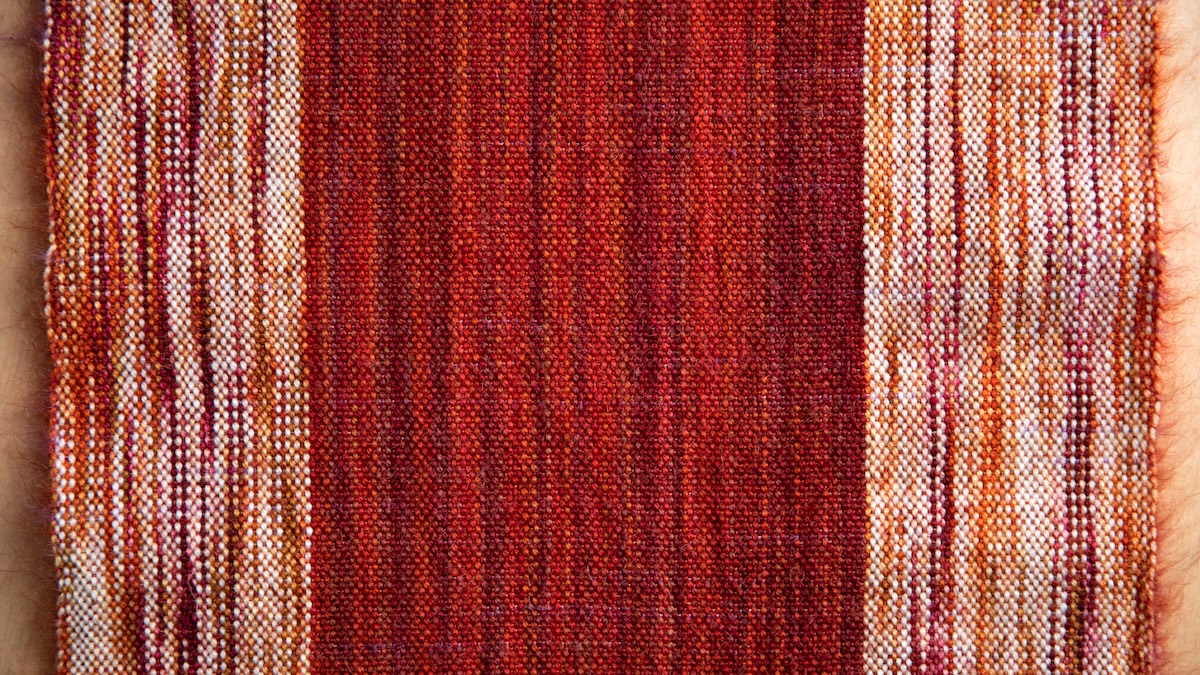
Twill vs. Plain Weave Scarves
In the last example in this post and video, Felicia’s scarf from her newest course, Handpainted Warps, explores twill weave. She compares her scarf sett at 15 epi in plain weave to the twill scarf sett at 20 epi, demonstrating how the same warp yarn can produce dramatically different results depending on sett and weave structure.
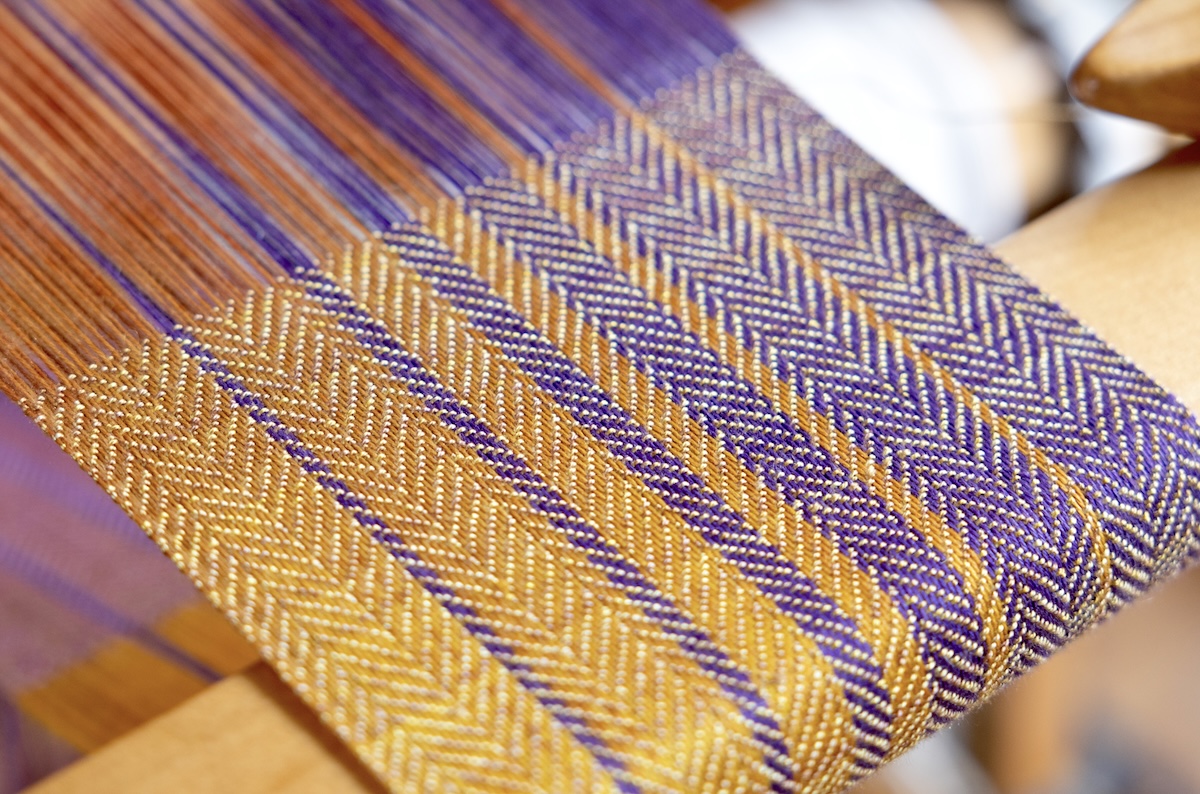
Final Thoughts
Felicia explains that choosing a sett depends on several factors: the desired fabric characteristics, materials (the warp yarn and the weft yarn as well as if the yarn is superwash), and weave structure. Sampling is essential. She suggests dressing the loom at the intended sett, weaving a few inches, cutting the sample off the loom, and washing it to see how the fabric behaves. This process allows for adjustments, such as changing the reed or sett, beating tighter or looser, or selecting a different weft yarn.
Felicia has woven many scarves using the same type of warp yarn, yet each project is a unique exploration of how sett, yarn, and weave structure interact to create fabric with specific qualities. Sampling, she believes, is the key to successful weaving.
For multi-shaft weavers, this reed substitution chart is designed to help you make the most of the reeds you already own and find the ideal sett for your project. For rigid heddle weavers, we hope this article guides you in the process of how to select the reed that best suits your project’s needs.
The post Choosing the Right Reed & Finding the Perfect Sett appeared first on SweetGeorgia Yarns.
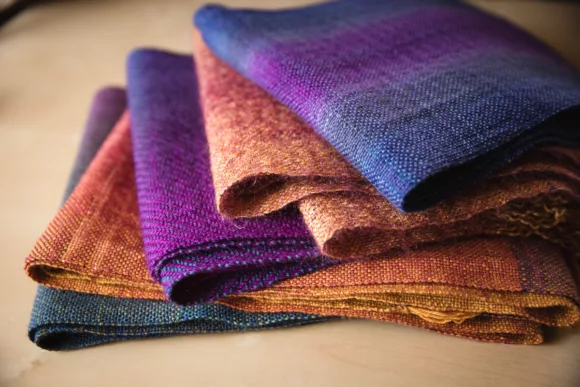
Comments
Post a Comment